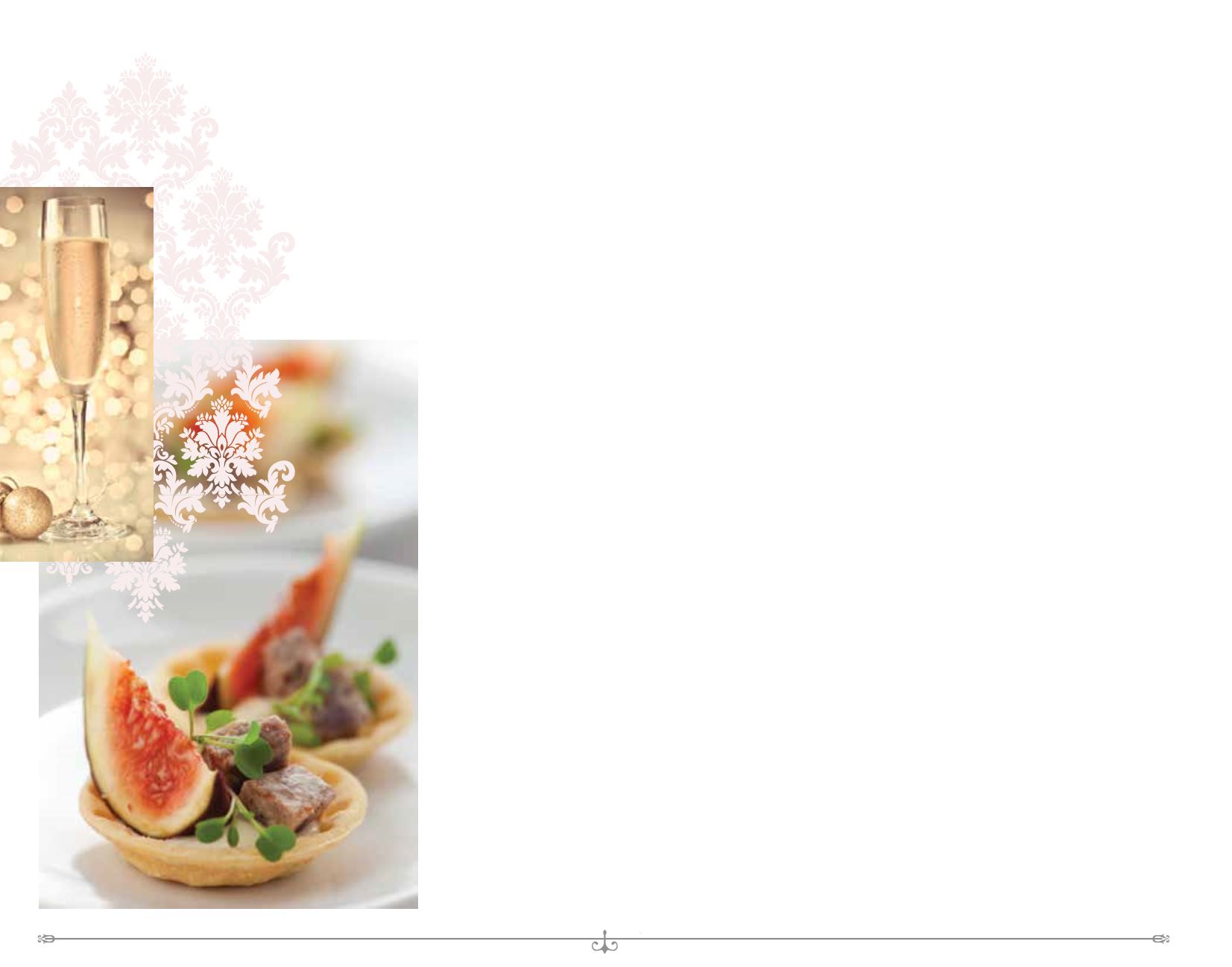

C H I C A G O W E D D I N G & P A R T Y R E S O U R C E
W W W . C H I C A G O W E D D I N G R E S O U R C E . C O M
18
B A N Q U E T S , R E C E P T I O N S , S H O W E R S & P A R T I E S
Whether it’s trays of fun gourmet
sliders; a chic sushi station; elegant
plates of Kobe beef; or a convivial
family-style feast in which every
ingredient is organic, seasonal and
locally grown; the meal you serve
at your wedding sets the tone for
the entire celebration. The key
component of your reception,
it deserves a caterer whose
professionalism, style and, of course,
cuisine reigns supreme.
PROPER PREP
The majority of couples both
research and book their caterer
six to 12 months prior to the main
event – that is, if the caterer isn’t a
package deal with your venue. But
try to jump on it early if you want
the best, as they can only work a
limited number of weddings per
weekend.
You’ll ideally want to meet with a
few of your favorite options and
ask a lot of questions. How creative
can they get within your budget?
Are they open to modifying their
standard menus with special
recipes? Can they provide variety for
folks who eat vegetarian or gluten-
free? Do they have recent experience
with your location?
If you’re having an at-home
wedding, ask them to tour your
kitchen. You might need to rent
them a cooking tent, which is
actually smart because it keeps the
magic out of sight and prevents
damage to your house.
Once you’ve made your decision,
schedule a tasting that includes
appetizers and different sauces that
can be used to dress up less pricey
entrées.
Speaking of financial planning,
dinner and drinks typically is your
biggest expense – the average couple
spends more than $10,000 on food
and another $3,000 on the bar –
approximately 60 percent of the
total budget. But the cost can vary
widely depending on the city, menu,
wedding size and how the caterer
charges for different styles of service.
A plated dinner involves more staff,
but a buffet requires more food
because the caterer can’t control
portion sizes. And with beverages,
some places charge per drink, while
others charge for an open bar based
on the time.
That said, in general, you can expect
to shell out $20 to $80 per person
for food, and $7 to $20 per person
for a four-hour full bar.
FOODIE FABULOUS
Before you start building your
menu, you’ll definitely want to take
your venue logistics into account.
If the kitchen is far away from the
dining area, for example, you may
want to pass on a plated dinner (the
most formal option, it involves lots
of individual servings presented at
the same time) in favor of a buffet
because the latter can easily be
replenished with single platters and
requires less staff
Once you’ve got your parameters,
it’s time to get creative! Incorporate
foods that mean something to you
– from your heritage, places you’ve
visited or local favorites. Just make
sure your caterer is comfortable
with the new recipes, and willing to
practice and perfect them.
Another continuing trend is classic
or comfort foods served in unique
ways, such as a mac and cheese or
mashed-potato station with gourmet
add-ons like truffle oil, mushrooms,
bacon and lobster. Stations are
growing more and more popular,
since the variety appeals to a large
number of guests’ particular tastes.
Comfort foods are great here, but
also consider Indian, Mexican,
Italian or Asian-themed stations, as
are raw seafood bars and a carving
table.
Decided on a royal wedding-
inspired daytime reception? Elegant,
lighter fare like flaky croissants and
yogurt with honey and figs. Pair
it with a mimosa or Bloody Mary
bar, a sparkling rosé, or drinks that
feel festive but have a lower alcohol
content, such as a refreshing spritz
made with orange-flavored Aperol,
prosecco and soda water.
GOOD LIBATIONS
A full open bar can cost a pretty
penny, but, luckily, there are lots of
ways to stay within your budget that
still have plenty of flair.
First off, you can limit the offerings
to wine and beer only. If you have
Serve It Up
with Style
By Anna Sachse









